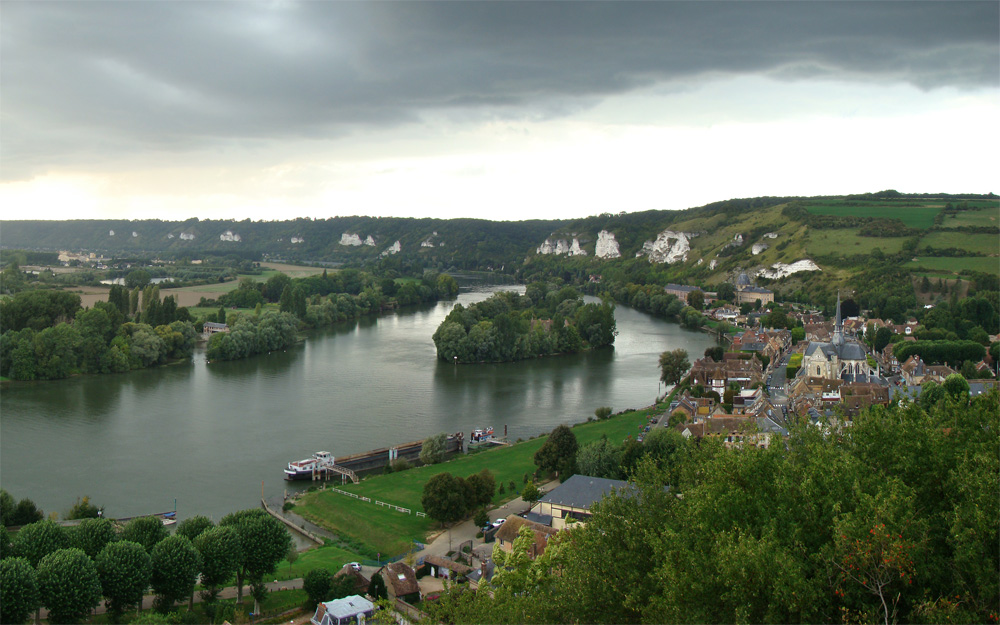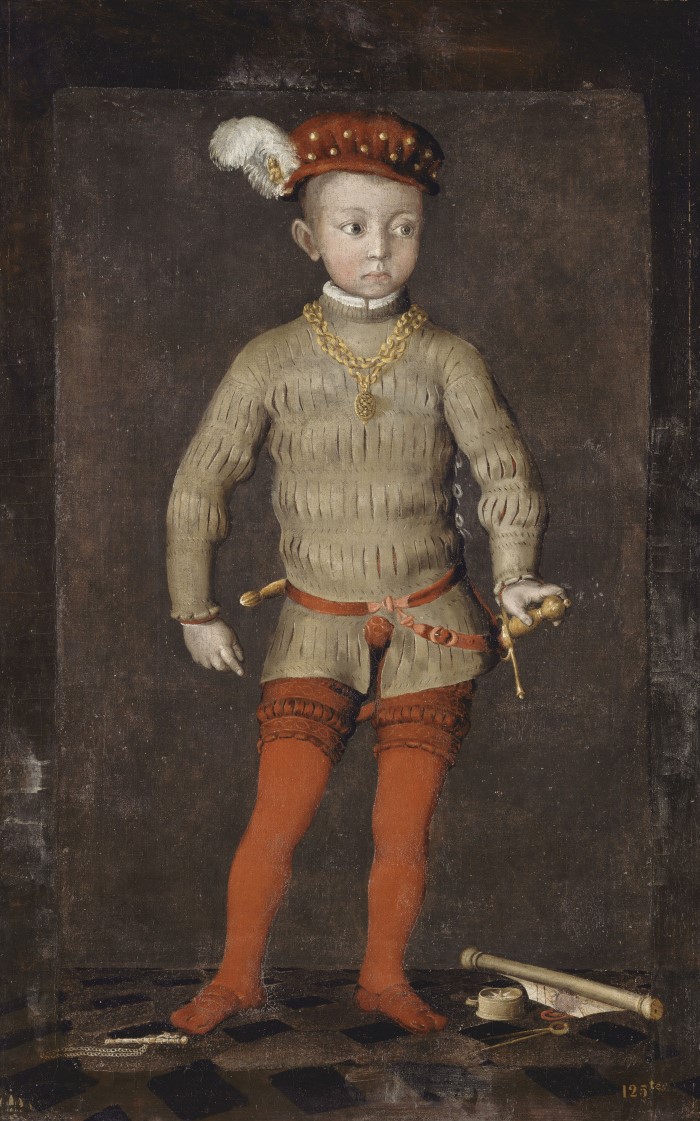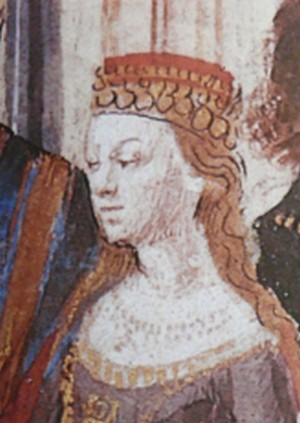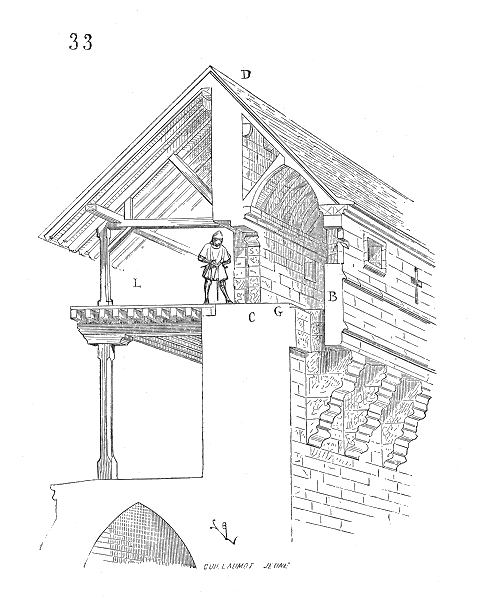|
Château Gaillard (Les Andelys), Vu Du Ciel
Château Gaillard () is a medieval castle ruin overlooking the River Seine above the commune of Les Andelys, in the French department of Eure, in Normandy. It is located some north-west of Paris and from Rouen. Construction began in 1196 under the auspices of Richard the Lionheart, who was simultaneously King of England and feudal Duke of Normandy. The castle was expensive to build, but the majority of the work was done in an unusually short period of time. It took just two years and, at the same time, the town of Petit Andely was constructed. Château Gaillard has a complex and advanced design, and uses early principles of concentric fortification; it was also one of the earliest European castles to use machicolations. The castle consists of three enclosures separated by dry moats, with a keep in the inner enclosure. Château Gaillard was captured in 1204 by the king of France, Philip II, after a lengthy siege. In the mid-14th century, the castle was the residence of the e ... [...More Info...] [...Related Items...] OR: [Wikipedia] [Google] [Baidu] |
Les Andelys
Les Andelys (; Norman language, Norman: ''Les Aundelys'') is a Communes of France, commune in the northern French Departments of France, department of Eure, in Normandy (administrative region), Normandy. Geography It lies on the Seine, about northeast of Évreux. The commune is divided into two parts, Grand-Andely (located about from the Seine) and Petit-Andely (situated on the right bank of the Seine). History Grand Andely, founded, according to tradition, in the 6th century, has a church (13th, 14th and 15th centuries) parts of which are of fine late Gothic and Renaissance architecture. The works of art in the interior include stained glass of the latter period. Other interesting buildings are the hôtel du Grand Cerf dating from the first half of the 16th century, and the chapel of Sainte-Clotilde, close by a spring which, owing to its supposed healing powers, is the object of a pilgrimage. Grand Andely has a statue of Nicolas Poussin, a native of the place. Petit Andely s ... [...More Info...] [...Related Items...] OR: [Wikipedia] [Google] [Baidu] |
Eure
Eure ( ; ; or ) is a department in the administrative region of Normandy, northwestern France, named after the river Eure. Its prefecture is Évreux. In 2021, Eure had a population of 598,934.Populations légales 2019: 27 Eure INSEE History Eure is one of the original 83 departments created during the French Revolution on 4 March 1790. It was created from part of the former province of . The name in fact is taken from the Eure river flowing mainly in ...[...More Info...] [...Related Items...] OR: [Wikipedia] [Google] [Baidu] |
Inner Bailey
The inner bailey or inner ward of a castle is the strongly fortified enclosure at the heart of a medieval castle.Friar, Stephen (2003). ''The Sutton Companion to Castles'', Sutton Publishing, Stroud, 2003, p. 22. It is protected by the outer ward and, sometimes also a '' Zwinger'', moats, a curtain wall and other outworks. Depending on topography it may also be called an upper bailey or upper ward. The inner bailey enclosed the most important living quarters and defensive elements for the lord and his family, e.g. the great hall, the ''palas'', the tower house and the keep or '' bergfried''. The castle well or cistern was usually found in the inner bailey, because water supplies were particularly important in the past in order to be able to withstand a siege for any length of time. The inner bailey is usually the oldest part of a castle, because it contains those buildings that were the first to be built during its construction. It often has flanking towers that enabled gr ... [...More Info...] [...Related Items...] OR: [Wikipedia] [Google] [Baidu] |
French Ministry Of Culture
The Ministry of Culture () is the ministry (government department), ministry of the Government of France in charge of List of museums in France, national museums and the . Its goal is to maintain the French identity through the promotion and protection of the arts (visual, plastic, theatrical, musical, dance, architectural, literary, televisual and cinematographic) on national soil and abroad. Its budget is mainly dedicated to the management of the (six national sites and hundred decentralised storage facilities) and the regional (culture centres). Its main office is in the in the 1st arrondissement of Paris on the . It is headed by the Minister of Culture, a cabinet member. The current officeholder has been Rachida Dati since 11 January 2024. History Deriving from the Italian Renaissance, Italian and Duchy of Burgundy, Burgundian courts of the Renaissance, the notion that the state had a key role to play in the sponsoring of artistic production and that the arts were linke ... [...More Info...] [...Related Items...] OR: [Wikipedia] [Google] [Baidu] |
Monument Historique
() is a designation given to some national heritage sites in France. It may also refer to the state procedure in France by which national heritage protection is extended to a building, a specific part of a building, a collection of buildings, a garden, a bridge, or other structure, because of their importance to France's architectural and historical cultural heritage. Both public and privately owned structures may be listed in this way, as well as movable objects. there were 44,236 monuments listed. The term "classification" is reserved for designation performed by the French Ministry of Culture for a monument of national-level significance. Monuments of lesser significance may be "inscribed" by various regional entities. Buildings may be given the classification (or inscription) for either their exteriors or interiors. A monument's designation could be for a building's décor, its furniture, a single room, or even a staircase. An example is the classification of the déco ... [...More Info...] [...Related Items...] OR: [Wikipedia] [Google] [Baidu] |
Henry IV Of France
Henry IV (; 13 December 1553 – 14 May 1610), also known by the epithets Good King Henry (''le Bon Roi Henri'') or Henry the Great (''Henri le Grand''), was King of Navarre (as Henry III) from 1572 and King of France from 1589 to 1610. He was the first monarch of France from the House of Bourbon, a cadet branch of the Capetian dynasty. He pragmatically balanced the interests of the Catholic and Protestant parties in France, as well as among the European states. He was assassinated in Paris in 1610 by a Catholic zealot, and was succeeded by his son Louis XIII. Henry was baptised a Catholic but raised as a Huguenot in the Protestant faith by his mother, Queen Jeanne III of Navarre. He inherited the throne of Navarre in 1572 on his mother's death. As a Huguenot, Henry was involved in the French Wars of Religion, barely escaping assassination in the St. Bartholomew's Day massacre. He later led Protestant forces against the French royal army. Henry inherited the thro ... [...More Info...] [...Related Items...] OR: [Wikipedia] [Google] [Baidu] |
David II Of Scotland
David II (5 March 1324 – 22 February 1371) was King of Scotland from 1329 until his death in 1371. Upon the death of his father, Robert the Bruce, David succeeded to the throne at the age of five and was crowned at Scone in November 1331, becoming the first Scottish monarch to be anointed at his coronation. During his childhood, David was governed by a series of guardians, and Edward III of England sought to take advantage of David's minority by supporting an invasion of Scotland by Edward Balliol, beginning the Second War of Scottish Independence. Following the English victory at the Battle of Halidon Hill in 1333, King David, Queen Joan and the rump of his government were evacuated to France, where he remained in exile until it was safe for him to return to Scotland in 1341. In 1346, David invaded England in support of France during the Hundred Years' War. His army was defeated at the Battle of Neville's Cross and he was captured and held as a prisoner in England for ... [...More Info...] [...Related Items...] OR: [Wikipedia] [Google] [Baidu] |
Philip II Of France
Philip II (21 August 1165 – 14 July 1223), also known as Philip Augustus (), was King of France from 1180 to 1223. His predecessors had been known as kings of the Franks (Latin: ''rex Francorum''), but from 1190 onward, Philip became the first French monarch to style himself "King of France" (''rex Francie''). The son of King Louis VII and his third wife, Adela of Champagne, he was originally nicknamed () because he was a first son and born late in his father's life. Philip was given the epithet "Augustus" by the chronicler Rigord for having extended the crown lands of France so remarkably. After decades of conflicts with the House of Plantagenet, Philip succeeded in putting an end to the Angevin Empire by defeating a coalition of his rivals at the Battle of Bouvines in 1214. This victory would have a lasting impact on western European politics: the authority of the French king became unchallenged, while John, King of England, was forced by his barons to assent to Magna C ... [...More Info...] [...Related Items...] OR: [Wikipedia] [Google] [Baidu] |
Keep
A keep is a type of fortified tower built within castles during the Middle Ages by European nobility. Scholars have debated the scope of the word ''keep'', but usually consider it to refer to large towers in castles that were fortified residences, used as a refuge of last resort should the rest of the castle fall to an adversary. The first keeps were made of timber and formed a key part of the motte-and-bailey castles that emerged in Normandy and Anjou during the 10th century; the design spread to England, Portugal, south Italy and Sicily. As a result of the Norman Conquest of England in 1066, use spread into Wales during the second half of the 11th century and into Ireland in the 1170s. The Anglo-Normans and French rulers began to build stone keeps during the 10th and 11th centuries, including Norman keeps, with a square or rectangular design, and circular shell keeps. Stone keeps carried considerable political as well as military importance and could take a decade or more t ... [...More Info...] [...Related Items...] OR: [Wikipedia] [Google] [Baidu] |
Moat
A moat is a deep, broad ditch dug around a castle, fortification, building, or town, historically to provide it with a preliminary line of defence. Moats can be dry or filled with water. In some places, moats evolved into more extensive water defences, including natural or artificial lakes, dams and sluices. In older fortifications, such as hillforts, they are usually referred to simply as ditches, although the function is similar. In later periods, moats or water defences may be largely ornamental. They could also act as a sewer. Historical use Ancient Some of the earliest evidence of moats has been uncovered around ancient Egyptian fortresses. One example is at Buhen, a settlement excavated in Nubia. Other evidence of ancient moats is found in the ruins of Babylon, and in reliefs from ancient Egypt, Assyria, and other cultures in the region. Evidence of early moats around settlements has been discovered in many archaeological sites throughout Southeast Asia, including ... [...More Info...] [...Related Items...] OR: [Wikipedia] [Google] [Baidu] |
Machicolation
In architecture, a machicolation () is an opening between the supporting corbels of a battlement through which defenders could target attackers who had reached the base of the defensive wall. A smaller related structure that only protects key points of a fortification are referred to as Bretèche. Machicolation, hoarding, bretèche, and murder holes are all similar defensive features serving the same purpose, that is to enable defenders atop a defensive structure to target attackers below. The primary benefit of the design allowed defenders to remain behind cover rather than being exposed when leaning over the parapet. They were common in defensive fortifications until the widespread adoption of gunpowder weapons made them obsolete. Etymology The word machicolation derives from Old French , mentioned in Medieval Latin">-4; we might wonder whether there's a point at which it's appropriate to talk of the beginnings of French, that is, when it wa ... , mentioned in Medieval Lat ... [...More Info...] [...Related Items...] OR: [Wikipedia] [Google] [Baidu] |
Duke Of Normandy
In the Middle Ages, the duke of Normandy was the ruler of the Duchy of Normandy in north-western France. The duchy arose out of a grant of land to the Viking leader Rollo by the French king Charles the Simple in 911. In 924 and again in 933, Normandy was expanded by royal grant. Rollo's male-line descendants continued to rule it until 1135, and cognatic descendants ruled it until 1204. In 1202 the French king Philip II declared Normandy a forfeited fief and by 1204 his army had conquered it. It remained a French royal province thereafter, still called the Duchy of Normandy, but only occasionally granted to a duke of the royal house as an appanage. Despite both the 13th century loss of mainland Normandy, the renunciation of the title by Henry III of England in the Treaty of Paris (1259), and the extinction of the duchy itself in modern-day France, the monarch of the United Kingdom is regardless still often informally referred to by the title "Duke of Normandy." This is the ... [...More Info...] [...Related Items...] OR: [Wikipedia] [Google] [Baidu] |










